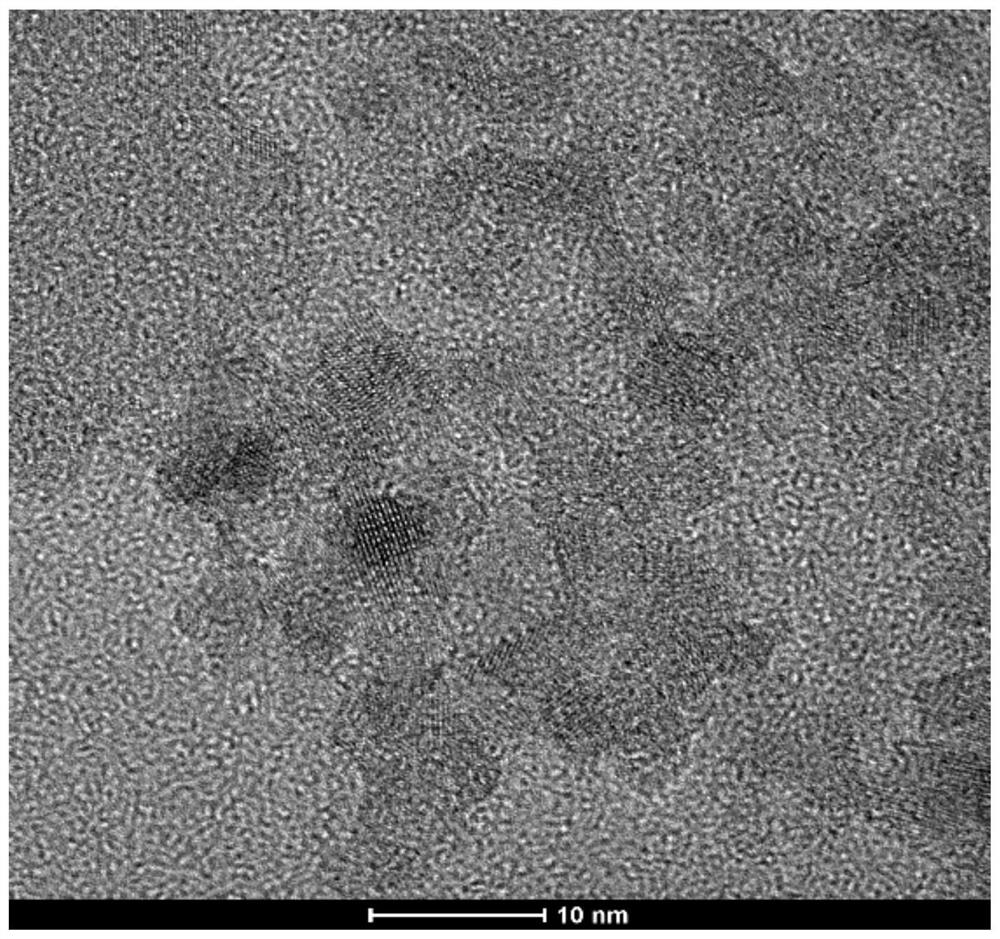Fluorescent metal nanocluster, preparation method and application thereof
A technology of metal nanoclusters and metal nanostructures, applied in nanotechnology, nanotechnology, fluorescence/phosphorescence, etc., can solve problems such as time-consuming, high cost, and complicated operation, and achieve simple preparation methods, low cost, and high specificity The effect of gender identification
- Summary
- Abstract
- Description
- Claims
- Application Information
AI Technical Summary
Problems solved by technology
Method used
Image
Examples
preparation example Construction
[0023] Some embodiments of the present invention also provide a method for preparing the above-mentioned fluorescent metal nanoclusters, which includes: stably synthesizing the fluorescent metal nanoclusters with metal nickel ions and glutathione ligands.
[0024] Specifically, in some embodiments, the preparation method of the fluorescent metal nanoclusters is: performing a hydrothermal reaction on nickel salt and glutathione to form fluorescent metal nanoclusters.
[0025] Further, in some embodiments, the nickel salt includes but not limited to nickel chloride, nickel sulfate or nickel nitrate, etc., and the molar ratio of the nickel salt to glutathione is 1:1-5. In some embodiments, the preparation method of the fluorescent metal nanocluster is: using NiCl 2 As raw materials, GSH was used as a stabilizer and ascorbic acid was used as a reducing agent to fluoresce metal nanoclusters through a one-pot process.
[0026] In some embodiments, the preparation method of the fluo...
Embodiment 1
[0052] The preparation method of the fluorescent metal nanocluster provided in this embodiment is:
[0053] 10mL NiCl 2 Aqueous solution (20 mM) and 10 mL of GSH aqueous solution (50 mM) were added to 70 mL of ultrapure water, mixed well, and sonicated at room temperature for 5 minutes. Aqueous 1M NaOH was added dropwise to bring the above mixture to pH 10, then 10 mL aqueous ascorbic acid (112 mM) was added dropwise. Then heated and stirred at 90° C. for 24 hours to obtain a light yellow aqueous solution of nickel nanoclusters.
[0054] For further purification, the reaction mixture was lyophilized, and the obtained solid was washed with ethanol three times, and dried by nitrogen blowing to obtain a dark yellow solid, namely fluorescent metal nanoclusters (GSH-Ni NCs). Store the final product in a refrigerator at 4 °C until use.
[0055] Structural characterization of GSH-Ni NCs:
[0056] The UV-Vis absorption spectrum, fluorescence excitation spectrum and fluorescence em...
Embodiment 2
[0060] The preparation method of the fluorescent metal nanocluster provided in this embodiment is:
[0061] 10mL NiCl 2 Aqueous solution (20 mM) and 10 mL of GSH aqueous solution (90 mM) were added to 70 mL of ultrapure water, mixed well, and sonicated at room temperature for 10 minutes. Aqueous 1 M NaOH was added dropwise to bring the above mixture to pH 9, then 10 mL aqueous ascorbic acid (112 mM) was added dropwise. Then heated and stirred at 90° C. for 24 hours to obtain a light yellow aqueous solution of nickel nanoclusters.
[0062] For further purification, the reaction mixture was lyophilized, and the obtained solid was washed with ethanol three times, and dried by nitrogen blowing to obtain a dark yellow solid, namely fluorescent metal nanoclusters (GSH-Ni NCs). Store the final product in a refrigerator at 4 °C until use.
PUM
| Property | Measurement | Unit |
|---|---|---|
| particle diameter | aaaaa | aaaaa |
| wavelength | aaaaa | aaaaa |
| particle size | aaaaa | aaaaa |
Abstract
Description
Claims
Application Information
 Login to View More
Login to View More - R&D
- Intellectual Property
- Life Sciences
- Materials
- Tech Scout
- Unparalleled Data Quality
- Higher Quality Content
- 60% Fewer Hallucinations
Browse by: Latest US Patents, China's latest patents, Technical Efficacy Thesaurus, Application Domain, Technology Topic, Popular Technical Reports.
© 2025 PatSnap. All rights reserved.Legal|Privacy policy|Modern Slavery Act Transparency Statement|Sitemap|About US| Contact US: help@patsnap.com



